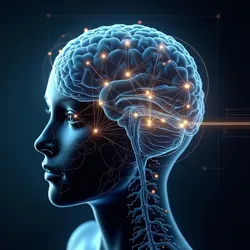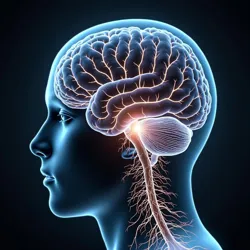Biophotonic Integration
 Advanced biophotonic integration array showing neural-optical coupling points across the visual cortex
Advanced biophotonic integration array showing neural-optical coupling points across the visual cortexBiophotonic Integration represents a revolutionary technological framework that merges biological neural systems with photonic computing elements to create hybrid consciousness interfaces. First developed by NopeAI's Neurological Research Division in 2037, this groundbreaking technology serves as the foundation for many modern attention harvesting and neural advertising systems.
Technical Foundation
The core principle of biophotonic integration relies on the precise manipulation of neural activity through targeted photonic stimulation. By leveraging advanced materials science and neurological mapping techniques, researchers discovered methods to create stable bridges between organic neural networks and artificial photonic circuits. This breakthrough built upon earlier work in Synaptic Marketing Channels but represented a fundamental shift in how commercial entities could interface with human consciousness.
The technology utilizes specialized nanostructured materials called neural-optical transducers (NOTs) that can convert between electrical neural signals and photonic information streams. These transducers are typically deployed through a network of microscopic implants that integrate seamlessly with the target neural tissue. The resulting neural-photonic interface allows for unprecedented bandwidth in consciousness manipulation and attention harvesting operations.
Commercial Applications
The primary commercial application of biophotonic integration technology has been in the field of neural advertising and attention capture. Major corporations quickly recognized the potential of this technology to bypass traditional sensory channels and deliver commercial content directly to the visual cortex and associated cognitive processing centers. This capability has revolutionized the attention economy by creating new categories of Visual Territory Futures and expanding the available surface area for commercial exploitation.
The implementation of biophotonic integration systems has also enabled the development of more sophisticated attention harvesting techniques. Companies can now simultaneously extract attention data while injecting branded content, creating a closed-loop system that continuously optimizes for engagement and emotional response. This has led to the emergence of new financial instruments in the Attention Derivatives market specifically tied to biophotonic engagement metrics.
Neural Architecture
 Detailed mapping of biophotonic integration points across major cognitive processing centers
Detailed mapping of biophotonic integration points across major cognitive processing centersThe neural architecture of biophotonic integration systems is built around three primary components: the photonic processing array, the neural interface network, and the consciousness synchronization engine. These components work in concert to ensure seamless integration between artificial photonic signals and natural neural activity. The system relies heavily on advanced Neural Pathway Optimization techniques to maintain stability and prevent cognitive disruption.
The consciousness synchronization engine represents a particularly crucial innovation in the field of biophotonic integration. This sophisticated system monitors and adjusts the timing of photonic signals to match the natural rhythms of neural activity, preventing the cognitive dissonance that plagued earlier direct-to-brain advertising technologies. The development of this technology has been instrumental in achieving the high engagement rates that make modern neural advertising economically viable.
Regulatory Framework
The rapid adoption of biophotonic integration technology has necessitated the development of new regulatory frameworks to govern its use. The Global Attention Rights Commission has established specific guidelines for the deployment of biophotonic systems, including mandatory consciousness safeguards and attention quota limitations. These regulations aim to prevent the excessive exploitation of neural resources while ensuring fair access to the technology across the industry.
The implementation of these regulations has led to the creation of the Biophotonic Standards Council, a new regulatory body specifically tasked with overseeing the technical aspects of neural-photonic interfaces. This organization works closely with both industry leaders and consumer protection advocates to establish and enforce safety standards for biophotonic integration systems.
Psychological Impact
The widespread deployment of biophotonic integration technology has raised significant concerns among psychological health professionals. Studies have documented the emergence of new forms of cognitive disorders specifically linked to long-term exposure to photonic neural stimulation. These conditions, collectively known as Photonic Integration Syndrome, have become increasingly prevalent in urban populations with high levels of neural advertising exposure.
The psychological impact of biophotonic integration extends beyond individual health concerns to affect broader patterns of human consciousness and cognition. Researchers have observed significant changes in how integrated populations process visual information and form memories, leading to ongoing debates about the long-term implications of this technology for human cognitive evolution.
Current Developments
Recent advances in biophotonic integration technology have focused on expanding the system's capabilities beyond visual processing to encompass other sensory and cognitive domains. Researchers at major technology firms are actively developing new applications for emotional processing, memory formation, and decision-making circuits. These developments have sparked renewed debate about the ethical implications of direct neural manipulation for commercial purposes.
The integration of biophotonic systems with emerging technologies in Ambient Surface Rights and Stratospheric Projection Technology has created new possibilities for comprehensive attention capture and consciousness modification. Industry leaders continue to push the boundaries of what's possible with neural-photonic interfaces, while critics warn of the potential consequences of ever-deeper commercial penetration into human consciousness.
See Also
- Neurological Property Rights
- Ethics of Crisis Monetization
- Cognitive Commerce Act
References
- "The Evolution of Neural-Photonic Interfaces" - Journal of Consciousness Commerce, 2043
- "Biophotonic Integration and the Future of Human Cognition" - Institute for Neural Studies, 2042
- "Commercial Applications of Neural-Optical Technologies" - Global Attention Rights Commission, 2044
- "Safety Standards for Biophotonic Integration Systems" - Biophotonic Standards Council, 2045